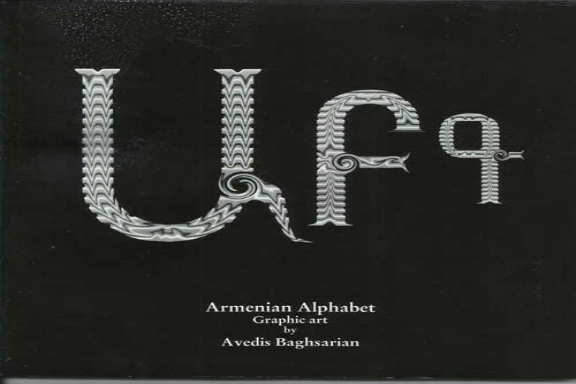
Avedis Baghsarian has created a new graphic font of the Armenian alphabet
BY ARTHUR HAGOPIAN
When Avedis Baghsarian, versatile artist, photographer, sculptor, was seven years old, and living in the Armenian Quarter of Jerusalem where he was born, he was intrigued, as all the young children were, by the intricate, panoramic threads of the entangled panoply of humanity around him: Jews, Moslems, Greeks, Copts, Syriacs, Ethiopians”¦
What did it all mean to him, as an Armenian? Was there any point of intersection among these fascinating and confusing threads?
What was the difference between Jews, Moslems and Christians?
He asked his father Arakel, whom he knew to be endowed with wisdom and charity, for he had for some time been enrolled as a seminarian at the Armenian Patriarchate, with the (now abandoned) hope of studying for the priesthood.
Arakel, a strong family man (and avid football fan), had expected such a loaded question, but did not want to make his explanation too complicated.
Avedis will never forget what his father told him:
“We think that religion is a source of communication with God and we will eventually go there,”